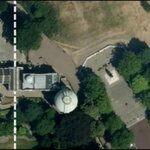Geology

The Cascadia subduction zone (CSZ) has captured major attention from paleoseismologists due to evidence from several large (magnitude 8-9) earthquakes preserved in coastal salt marshes. Stratigraphic records are proving to be useful for learning about the CSZ's past, and microfossils may provide more answers about large ancient earthquakes.
They may also allow modelers to learn more about potential major hazards related to earthquakes in the area, which would contribute to public preparedness for such events.
Over the past three decades, researchers have found stratigraphic evidence of…

By meticulously examining sediments in China's Yellow River, a Swedish-Chinese research group are showing that the history of tectonic and climate evolution on Earth may need to be rewritten. Their findings are published today in the highly reputed journal Nature Communications.
To reconstruct how the global climate and topography of the Earth's surface have developed over millions of years, deposits of eroded land sediment transported by rivers to ocean depths are often used. This process is assumed to have been rapid and, by the same token, not to have resulted in any major storages of this…

In the Mediterranean climate of California, with its warm, wet winters and hot, dry summers, the snowpack in the Sierra Nevada mountains plays a critical role. It serves as a natural water storage system that feeds waterways and reservoirs during the dry summer months.
That’s why it was very fitting that when Governor Jerry Brown announced the first-ever mandatory statewide water restrictions, he did it from the snow-barren Phillips snow course station in the Sierra Nevada. The April 1 snowpack’s water content has been measured at this station since 1941 and has averaged at 66.5 inches over…
This morning, in that !terrible! right-wing rag, the Daily Mail, I was intrigued to read this:
How Hawaii and Iceland were born: Stunning 'CT scans' of the Earth's interior reveal vast plumes under the ocean feeding volcanic hotspots
Connects plumes of hot rock rising with surface hotspots
Hotspots go on to generate volcanic island chains like Hawaii and Iceland
which featured wonderful pictures like this one, though they left off the scale bar at the left.
Looking to the source, I found a press release CT scan of Earth links mantle plumes with volcanic hotspots; Simulations Run at…

STOCKHOLM, August 30, 2010 /PRNewswire/ -- According to the results of a late-breaking analysis involving more than 200 000 patients who participated in recent clinical trials, antihypertensive treatments with renin-angiotensin system (RAS) inhibitors significantly differ in their ability to preserve lives.(1) This new analysis, presented today at the European Society of Cardiology (ESC) Congress, revealed that patients receiving a treatment including a RAS inhibition with perindopril had a significantly greater improvement in life expectancy.
The goal of hypertension management is not only…

We can be concerned about erosion due to man-made causes but it is nothing like what nature will randomly do in a single year, without ever once consulting Natural Resources Defense Council or other industry-funded groups.
The historic September 2013 storm that triggered widespread flooding across Colorado's Front Range eroded the equivalent of hundreds, or even as much as 1,000 years worth of accumulated sediment from the foothills west of Boulder, researchers at the University of Colorado Boulder have discovered. The findings in Geology suggest that erosion may not always be a slow and…

In 1884, a delegation of international representatives convened in Washington, D.C. to recommend that Earth's prime meridian (the north-south line marking zero degrees longitude) should pass through the Airy Transit Circle at the Royal Observatory in Greenwich, England.
(A transit circle is an instrument for measuring star positions, and could be used for determining local time; this one was named for its designer, British Astronomer Royal George Airy.)
But modern navigators, mapmakers, surveyors and London tourists now find that zero longitude runs 334 feet east of the telescope, according…

Since 2010, the best estimate of the age of Earth’s magnetic field has been 3.45 billion years but new research says the magnetic field is far older. John Tarduno, a geophysicist at the University of Rochester and a leading expert on Earth’s magnetic field, and his team of researchers say they believe the Earth’s magnetic field is at least four billion years old.
Earth’s magnetic field is generated in its liquid iron core, and this “geodynamo” requires a regular release of heat from the planet to operate. Today, that heat release is aided by plate tectonics, which efficiently transfers heat…

Antonio Aledo, Professor of Sociology at the University of Alicante, warns that "because of real estate speculation and the management of public budgets based on income from the real estate business, seismic risk has been forgotten."
As an example, he used the town of Torrevieja, where one of the biggest earthquakes in the province of Alicante took place in 1829 with more than 389 dead and 209 wounded. And things would not be much better now.
As indicated by the professor, "the residential tourism model implemented in Torrevieja has not only created economic risk by the construction crisis…

The December 26th 2004 Mw ~9.2 Indian Ocean earthquake, also known as the Sumatra-Andaman or Aceh-Andaman earthquake and generated massive, destructive tsunamis, clearly demonstrated the need for a better understanding of how frequently subduction zone earthquakes and tsunamis occur.
Using subsidence stratigraphy, a team traced the different modes of coastal sedimentation over the course of time in the eastern Indian Ocean where relative sea-level change evolved from rapidly rising to static from 8,000 years ago to the present day.
Harvey M. Kelsey of Humboldt State University
and…